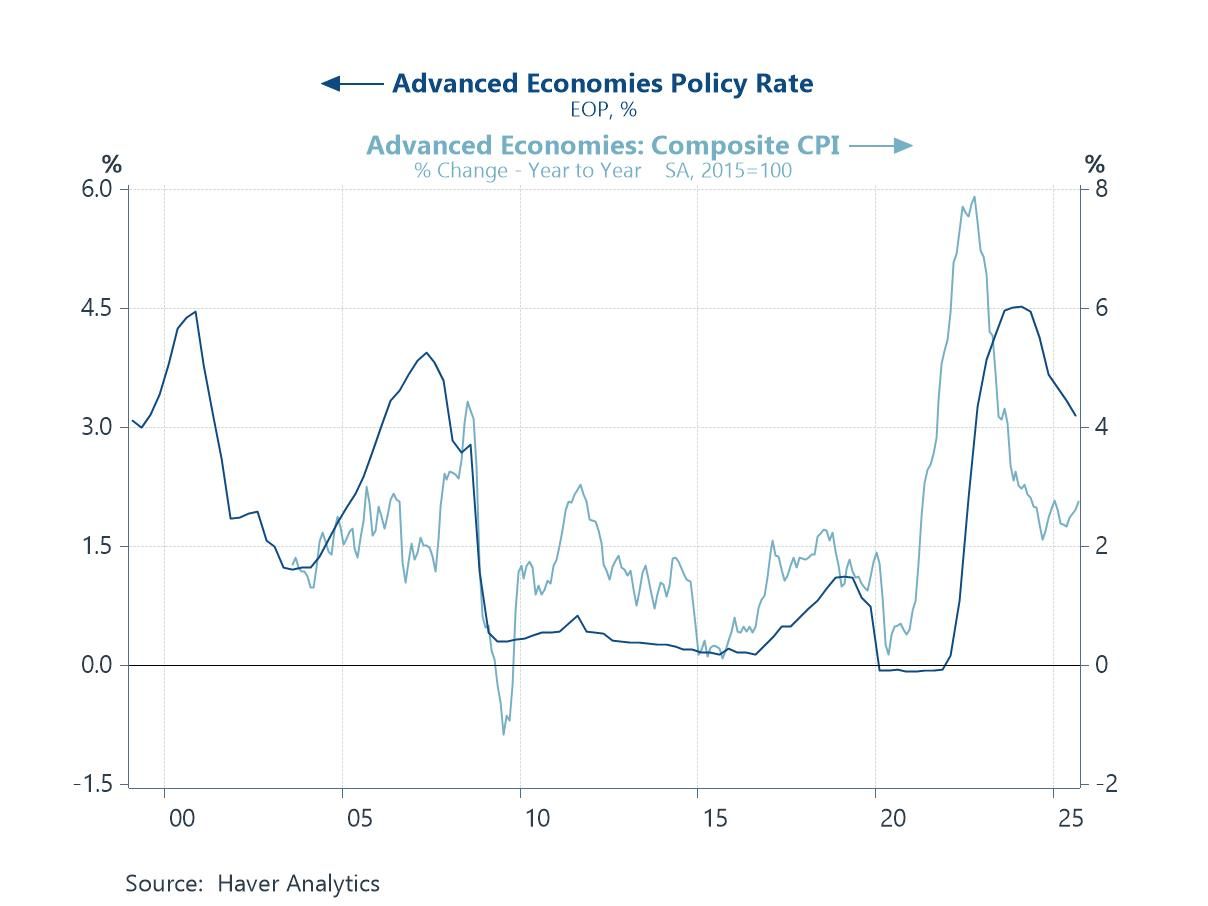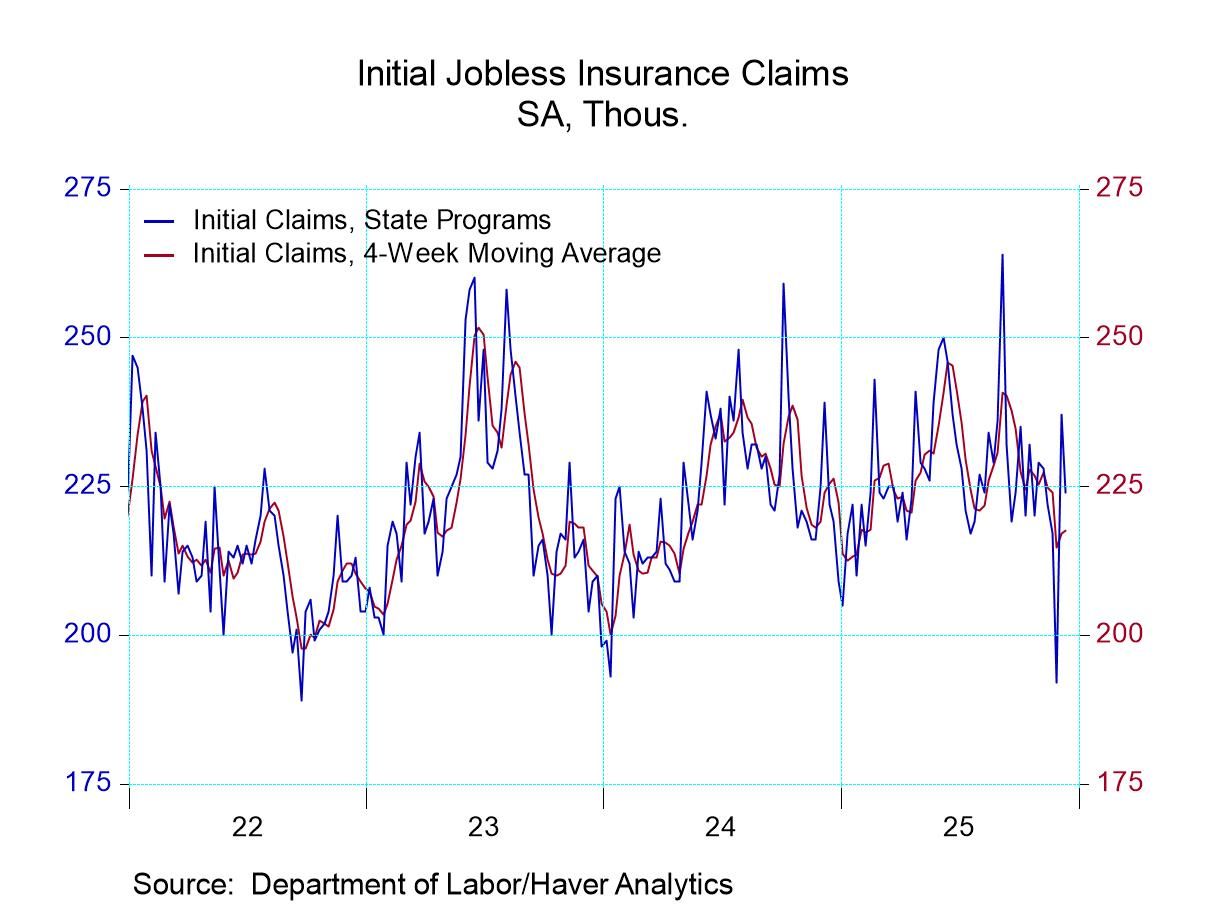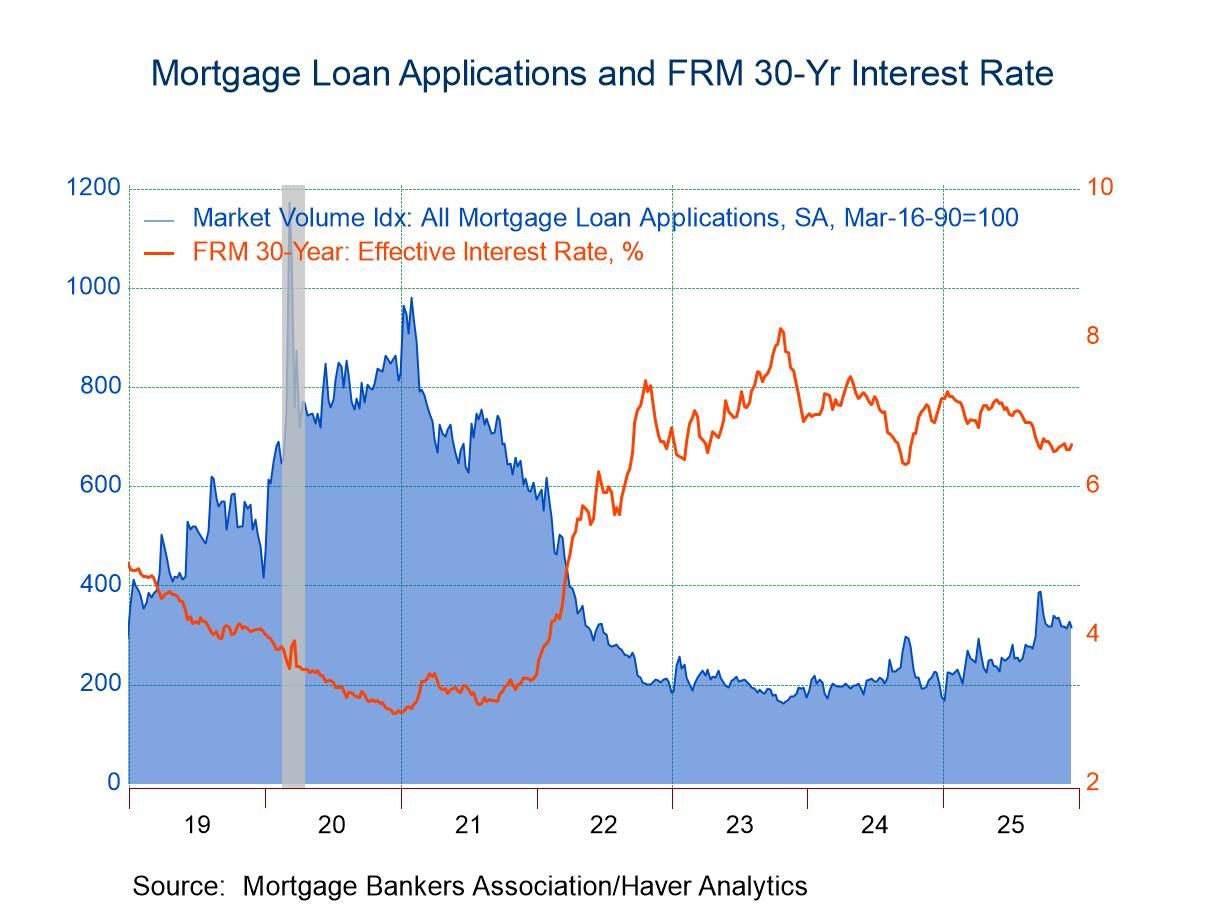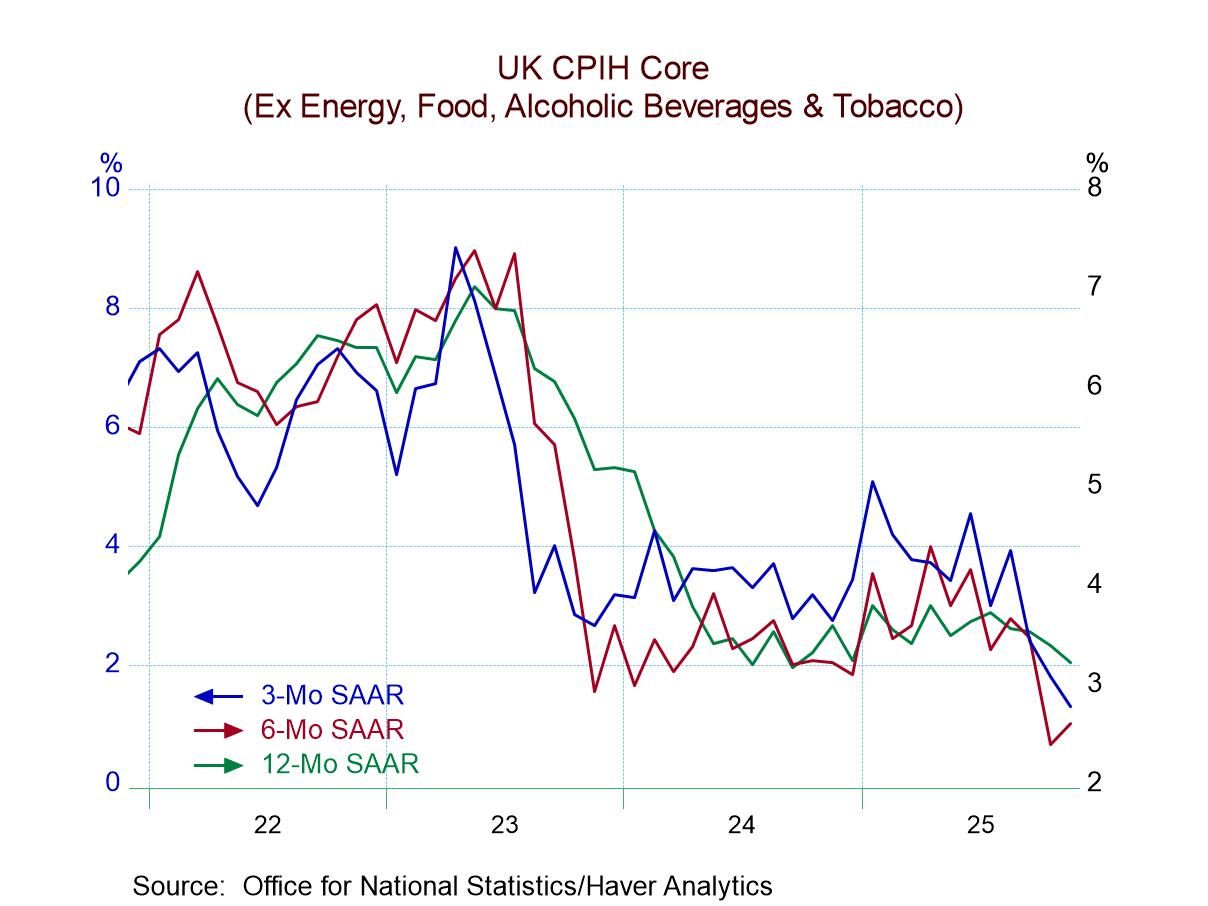U.S. Consumer Credit Slows in May
by:Tom Moeller
|in:Economy in Brief
Summary
- Consumer credit weakens more than expected.
- Nonrevolving credit usage eases as revolving credit declines.


Consumer credit outstanding increased $5.1 billion (2.0% y/y) during May after rising $16.9 billion in April, revised from $17.9 billion, and $7.9 billion in March, revised from $8.6 billion. A $12.0 billion rise had been expected in the Action Economics Forecast Survey. As a percentage of disposable personal income, consumer credit of 22.5% in May compared to 22.3% in April and 22.9% one year earlier. It reached a high of 26.4% during all of 2017.
Nonrevolving credit outstanding rose $8.6 billion (1.8% y/y) during May after rising $9.4 billion in April, revised from $10.2 billion, and $6.0 billion in March, revised from $6.8 billion. Nonrevolving credit held by depository institutions declined 7.3% y/y in May after falling 7.5% y/y in April. Finance company debt holdings eased 0.2% y/y after increasing 0.4% y/y in April, while credit union holdings rose 10.8% y/y in May after a 10.4% y/y April jump. Nonrevolving debt of the federal government rose 4.0% y/y following a 3.6% y/y rise in April.
In May, revolving credit outstanding, which includes credit cards, declined $3.5 billion (+2.6% y/y) after a $7.5 billion gain in April, revised from $7.6 billion following a little-revised rise of $1.9 billion in March. Revolving credit outstanding held by depository institutions fell 2.9% y/y after declining 2.0% y/y in April. Revolving credit held by finance companies fell 10.9% y/y after an 11.6% y/y drop in April, while credit held by credit unions rose a steady 3.9% y/y in May.
The consumer credit figures from the Federal Reserve Board are break-adjusted and calculated by Haver Analytics. The breaks in the series in 2005, 2010 and 2015 are the result of the incorporation of data from the Census and the Survey of Finance Companies, as well as changes in the seasonal adjustment methodology. The consumer credit data are available in Haver’s USECON database. The Action Economics forecast figures are contained in the AS1REPNA database.


Tom Moeller
AuthorMore in Author Profile »Prior to joining Haver Analytics in 2000, Mr. Moeller worked as the Economist at Chancellor Capital Management from 1985 to 1999. There, he developed comprehensive economic forecasts and interpreted economic data for equity and fixed income portfolio managers. Also at Chancellor, Mr. Moeller worked as an equity analyst and was responsible for researching and rating companies in the economically sensitive automobile and housing industries for investment in Chancellor’s equity portfolio. Prior to joining Chancellor, Mr. Moeller was an Economist at Citibank from 1979 to 1984. He also analyzed pricing behavior in the metals industry for the Council on Wage and Price Stability in Washington, D.C. In 1999, Mr. Moeller received the award for most accurate forecast from the Forecasters' Club of New York. From 1990 to 1992 he was President of the New York Association for Business Economists. Mr. Moeller earned an M.B.A. in Finance from Fordham University, where he graduated in 1987. He holds a Bachelor of Arts in Economics from George Washington University.




 Global
Global

